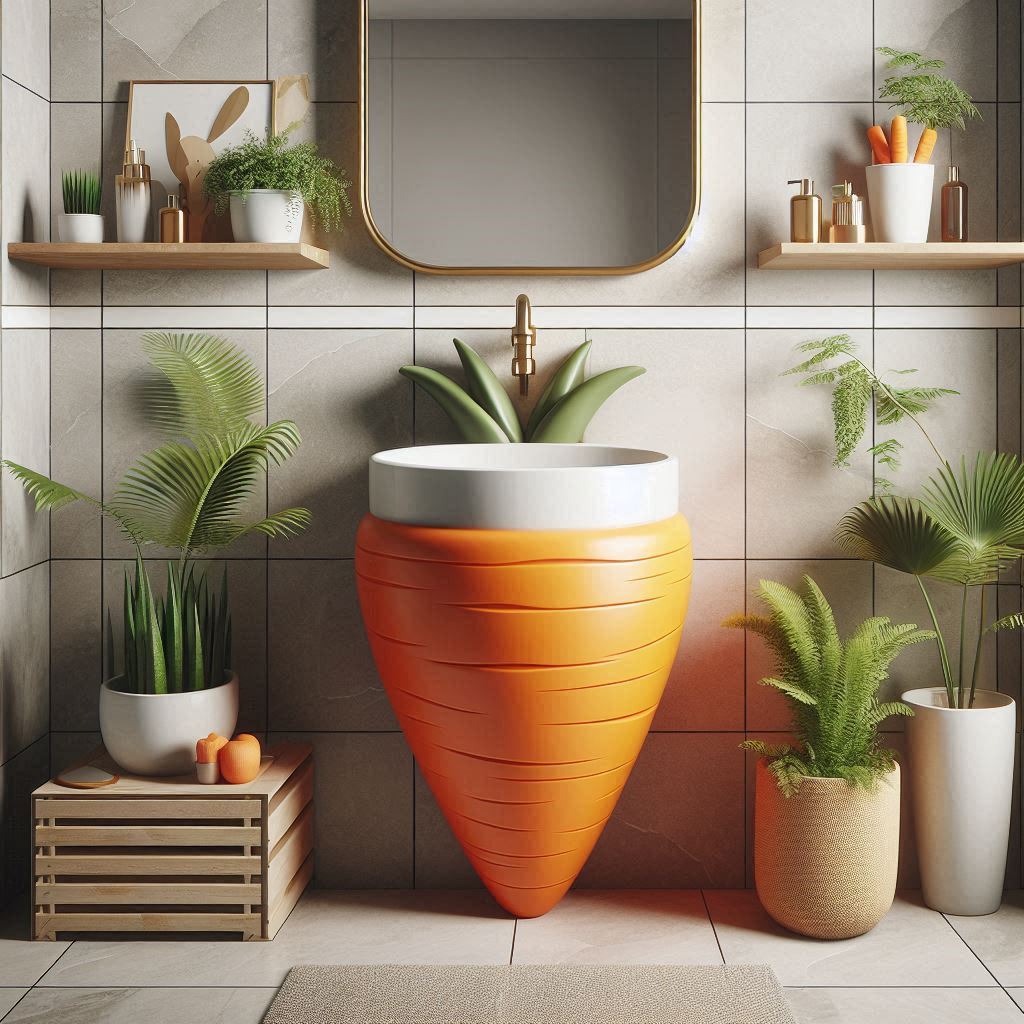
The kitchen is often described as the heart of a home, and with good reason. It’s where meals are prepared and memories are made. As such, it’s crucial to have a functional and efficient kitchen that meets your needs. One essential addition to any kitchen is a vegetable sink. This dedicated sink offers numerous benefits that not only enhance the functionality of your kitchen but also add to its aesthetic appeal. In this article, we will explore the various benefits of a vegetable sink, provide tips for installation and maintenance, and discuss popular materials and features to consider when choosing the right vegetable sink for your kitchen.
Contents
Benefits of a Vegetable Sink

A vegetable sink provides a designated space for washing produce, cleaning dishes, and preparing meals. Here are some of the main advantages of having a vegetable sink in your kitchen:
Enhanced Functionality
One of the primary benefits of a vegetable sink is its ability to enhance the functionality of your kitchen. With a separate sink for food preparation, you can keep your main sink free for larger items, ensuring efficient workflow and preventing cross-contamination. This is particularly useful when cooking multiple dishes at once or hosting large gatherings where there may be a lot of dishes to wash.
Convenience

Having a vegetable sink in your kitchen adds an element of convenience. Instead of having to crowd your main sink with dishes and ingredients, you can quickly and easily wash vegetables, fruits, and other ingredients without moving your workstation. This can save time and make the cooking process more streamlined.
Hygiene and Safety
By having a separate sink for food preparation, you minimize the risk of cross-contamination from bacteria or other contaminants that might be present in your main sink. This promotes hygiene and ensures the safety of your food, making it a crucial addition to any kitchen, especially for those who are health-conscious.
Aesthetic Appeal

Apart from functionality, a well-designed vegetable sink can also add a touch of elegance and sophistication to your kitchen. With various materials, styles, and designs available, you can choose a sink that complements your kitchen’s aesthetic and adds to its overall appeal.
Increased Kitchen Value
Investing in a vegetable sink can also increase the resale value of your home. Potential buyers appreciate the added functionality and convenience that this feature provides, making it a desirable addition to any kitchen.
Choosing the Right Vegetable Sink for Your Kitchen

Now that we have explored the benefits of a vegetable sink, let’s delve into the factors to consider when choosing the right one for your kitchen.
Installation Tips for a Vegetable Sink
Proper installation is crucial for the functionality and efficiency of your vegetable sink. Here are some tips to keep in mind during the installation process:
- Location: The location of your vegetable sink should be close to your main sink for easy access to water and drainage. It should also be near your food preparation area.
- Size: Consider the size of your kitchen and the space available for the vegetable sink. A smaller sink may be suitable for a smaller kitchen, while a larger sink may work better in a spacious kitchen.
- Plumbing: Ensure that the plumbing is properly installed and connected to your main water supply and drainage system.
- Ventilation: Proper ventilation is important to prevent moisture build-up and potential mold growth. Make sure there is adequate ventilation around the sink area.

Maintenance and Cleaning of Vegetable Sinks
To ensure the longevity and functionality of your vegetable sink, proper maintenance and cleaning are essential. Here are some tips to keep in mind:
- Regular cleaning: Wipe down your vegetable sink after each use with a mild soap and water solution.
- Avoid abrasive cleaners: Harsh chemicals or abrasive cleaners can damage the surface of your sink. Stick to gentle cleaners or natural alternatives like vinegar or baking soda.
- Scratches: To avoid scratches, use a soft cloth or sponge when cleaning. Avoid using steel wool or scouring pads.
- Stains: If your sink has any stains, try using a mixture of baking soda and water to scrub them off. Rinse thoroughly afterward.

Popular Materials for Vegetable Sinks
When it comes to choosing the material for your vegetable sink, you have several options to consider. Here are some of the most popular materials used for vegetable sinks:
- Stainless Steel: This is a durable and low-maintenance option that is resistant to stains and corrosion. It also adds a modern touch to your kitchen.
- Porcelain/Ceramic: This is a classic and elegant choice for a vegetable sink. It is easy to clean and comes in various colors and designs.
- Granite/Composite: This is a more expensive option but offers durability and resistance to scratches and stains. It also adds a luxurious feel to your kitchen.
- Fireclay: This is a type of ceramic sink that is fired at an extremely high temperature, making it highly resistant to chips, scratches, and stains. It also adds a classic and traditional look to your kitchen.
- Copper: A copper sink adds a unique and rustic touch to your kitchen. It is naturally antibacterial and can develop a lovely patina over time.
Consider the style and aesthetic of your kitchen when choosing the material for your vegetable sink.

Innovative Features in Modern Vegetable Sinks

Apart from traditional materials, modern vegetable sinks come with innovative features that can enhance their functionality and add convenience to your kitchen. Here are some features to consider when choosing a vegetable sink:
- Integrated cutting board: Some vegetable sinks come with a built-in cutting board that fits perfectly over the sink, providing a designated space for meal prep.
- Overhanging ledge: This feature is useful for drying dishes or placing utensils while still leaving space in the sink for food preparation.
- Multiple basins: Some vegetable sinks come with more than one basin, allowing for multitasking and efficient workflow.
- Garbage disposal: Some vegetable sinks have an integrated garbage disposal unit, making it easier to dispose of food waste while prepping meals.
Consider your cooking habits and needs when choosing the features for your vegetable sink.
Comparing Single vs Double Basin Vegetable Sinks

When it comes to the number of basins in a vegetable sink, there are two main options: a single basin or a double basin. Here are some factors to consider when deciding between the two:
- Space: A single basin vegetable sink is ideal for smaller kitchens with limited counter space. It takes up less room compared to a double basin sink.
- Multitasking: If you often prepare multiple dishes at once, a double basin sink can be more efficient as it allows you to work in one basin while using the other for washing or soaking dishes.
- Cost: Double basin sinks are generally more expensive than single basin sinks due to their larger size and added features.
Consider your kitchen size, cooking habits, and budget when deciding between a single or double basin vegetable sink.
Enhancing Kitchen Efficiency with a Vegetable Sink

Apart from its designated functions, a vegetable sink can also be used to enhance the overall efficiency of your kitchen. Here are some ways to make the most out of your vegetable sink:
- Defrosting: You can use your vegetable sink to defrost frozen foods like meat or fish by filling it with cold water and submerging the food in it.
- Soaking: For tough stains or stuck-on food, fill your vegetable sink with warm water and dish soap and let your dishes soak before washing them.
- Handwashing: With a dedicated vegetable sink, you can reserve your main sink for handwashing, keeping it free from food debris.
- Additional workspace: If you have limited counter space, you can use your vegetable sink as an additional workspace for food preparation.
Accessorizing Your Vegetable Sink
To further enhance the functionality and convenience of your vegetable sink, there are various accessories that you can consider adding. Here are some popular options:
- Colander: A colander that fits perfectly over your vegetable sink makes it easier to wash and drain fruits and vegetables.
- Dish rack: Adding a dish rack to your vegetable sink can provide a designated space for drying dishes and freeing up counter space.
- Soap dispenser: Mounting a soap dispenser near your vegetable sink adds convenience and prevents clutter on your countertop.
- Sprayer: A sprayer attachment for your vegetable sink can make washing produce or rinsing dishes more efficient.
Consider your needs and habits when accessorizing your vegetable sink.
Budget-Friendly Vegetable Sink Options
If you are on a budget but still want to add a vegetable sink to your kitchen, there are some affordable options available. Here are a few budget-friendly vegetable sink options to consider:
- Drop-in sinks: These are the most common type of vegetable sinks and are generally more affordable due to their simple installation process.
- Stainless steel: This material is not only durable and low-maintenance but also more affordable compared to other materials like granite or fireclay.
- Smaller size: Choosing a smaller size vegetable sink can also help reduce costs compared to larger, more elaborate options.
Consider your budget and prioritize the essential features when choosing a vegetable sink.
Conclusion
A vegetable sink is a valuable addition to any kitchen, offering enhanced functionality, convenience, hygiene, and aesthetic appeal. When choosing the right vegetable sink for your kitchen, consider factors such as installation, maintenance, materials, features, and budget. With proper care and maintenance, your vegetable sink can be a long-lasting and essential part of your kitchen. So, whether you’re a seasoned chef or a novice cook, investing in a vegetable sink can make a significant difference in your kitchen’s efficiency and overall cooking experience.







